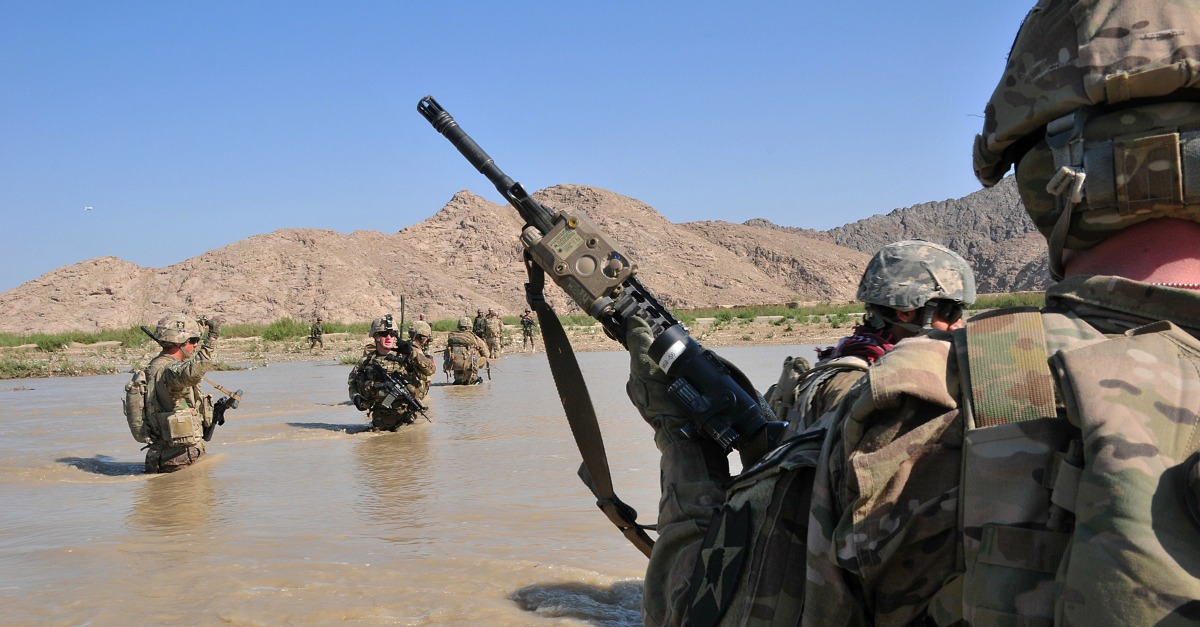By Jerrod Laber
Videos by Rare
President Donald Trump has been largely silent on the issue of the Afghanistan War, but top advisers are planning to recommend an increase in the number of troops stationed there. Currently, there are 8,400 troops present, and the proposal would increase that number by 3,000-5,000. In the aftermath of the attacks on September 11, 2001, large majorities agreed that the war in Afghanistan was not only justified, but necessary. In November 2001, 80 percent of people favored the invasion, and in early 2002, several months into the fighting, 93 percent believed it was the right decision to go to war. Only one member of Congress voted against it. A decade and a half later, with the conflict still ongoing, that number dropped to 54 percent, and those who believed it was a mistake had risen from single digits to 42 percent.
Whether or not a majority of people ever believe the conflict should never have happened, the evidence is clear. The Afghanistan War is a failure. It’s time to give up this fight once and for all, and bring everyone home. Re-escalating, as stalwart hawk Senators John McCain and Lindsey Graham have advocated, will simply waste more blood and resources in a battle that can’t be won.
RELATED: A new surge in Afghanistan won’t fix anything
The US first invaded Afghanistan in October 2001. It is now the site of the nation’s longest ever war. Initially, the US and Allied forces were successful in ousting the Taliban from power and disrupting al-Qaida operations. Beyond that very limited goal, there has been no broad political or humanitarian victory. The larger plan was the creation of a self-sustaining democratic state that could be turned over to the Afghans for their own governance. But this milestone is unlikely at this point, even after 16 years of conflict. Facing constant threats from insurgent groups, Afghanistan is unlikely to develop the means for self-governance, according to historian and Afghanistan veteran Aaron O’Connell, editor of the book “Our Latest Longest War“:
[A]s long as the people doing the aid work, the infrastructure work, the building of the roads, the creation of a power infrastructure – as long as they’re still being attacked by the Taliban, you can’t do the governance and development. So security has to come first.
In some cases, we are seeing not just a stalemate but a regression in condition when it comes to projects such as infrastructure. As O’Connell says, “today, more than half of the roads are deemed unfit for heavy traffic. And as one Afghani taxi driver put it in 2014: ‘things have gotten so much worse, now if we drive too fast, everyone in the car dies.’” This has implications for other issues as well, such as the building of hospitals which have been found to be “incomplete, inadequate, unsafe and unhealthy,” according to the Watson Institute’s Costs of War project. The US is spending money, but very little is improving. An additional 3,000-5,000 troops may provide a short-term boost to security, but will not solve the long-term problems of governance and institution building.
The Afghan war effort has cost the US more than $1 trillion with over 2,000 American soldiers killed. There have been an estimated 31,000 Afghan civilians killed as a direct consequence of the fighting. Afghanistan continues to rank at the bottom of indices measuring political freedom, and one out of three Afghani children are malnourished.
Clearly, Afghanistan is not remotely close to being a self-sustaining state. The creation of liberal institutions in a country that has resisted centralized rule for centuries is going to take more than simple inputs of money and personnel training on the part of the US. Afghanistan is not West Germany in the aftermath of World War II, wherein reconstruction efforts utilized existing political institutions, such as previously existing constitutions and laws. Europe was the birthplace of liberalism and has a long history of centralized nation-states. Afghanistan has a very different history of tribal rule.
RELATED: Trump’s first 100 days: Capitulating to the destructive status quo on foreign policy
McCain and Graham argue that more troops are necessary to ensure that Afghans can develop the security and governance mechanisms with which to combat terrorism on their own. But as O’Connell argues, there is good evidence that America’s ability to produce a capable, professional security force is very limited–and incredibly costly.
It is possible to defend the US against the threat of terrorism, particularly when that threat is becoming increasingly small, without the continual occupation of an entire country. This isn’t even about placing “America first.” It’s simply accepting that 16 years of fighting with no endgame in sight is long enough. It may be heartbreaking to remember the money and lives committed to the war, but Afghanistan is a lost cause. Even if Graham and McCain get their wish and more troops and resources are poured into the conflict, there is no outcome that can realistically be called a victory. Instead of sending thousands more people into battle, let’s bring everyone home, and not waste any more life on a futile war.
Jerrod A. Laber is a non-profit program manager living in Northern Virginia. He is a Young Voices Advocate.



